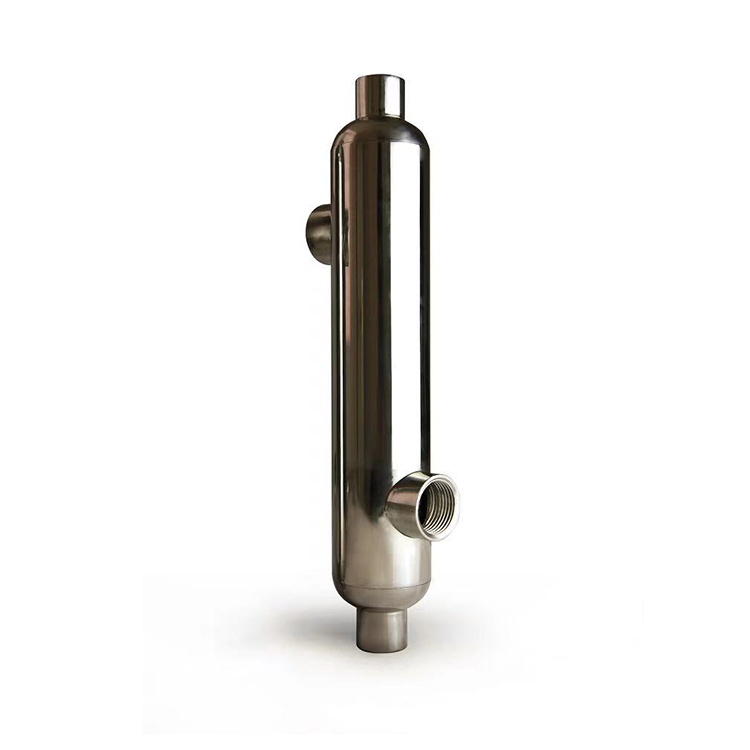Views: 13 Author: Site Editor Publish Time: 2020-10-20 Origin: Site

[Abstract]
Due to the addition of chlorine and bromine found in swimming pools and spas, and the flow requirements on the pool/hot tub side, flat plate solar heat exchangers are not suitable. A special high-flow cell heat exchanger should be used. These heat exchangers can handle higher secondary side flows and high levels of chlorine, and have better flow characteristics, making them ideal for solar pool heating or solar hot tub heating. For applications that use salt water, we recommend using a SUS316 version of the solar pool heat exchanger. This version has high resistance to salt water and chlorine.
[Text]
How Does Tube Heat Exchanger Work
The heat exchanger allows heat from a fluid (liquid or gas) to be transferred to a second fluid (another liquid or gas) without the need to mix the two fluids together or directly contact. The basic principle of the heat exchanger is that it transfers heat without transferring the heat-carrying fluid.
All heat exchangers perform the same job-transfer heat from one fluid to another-but they work in many different ways. The most common swimming pool heat exchanger is the shell and tube type
Shell and Tube Heat Exchangers consist of a large number of small tubes which are located within a cylindrical shell. The tubes are positioned into the cylinder using a tube bundle or “tube stack” which can either have fixed tube plates (permanently fixed to the body) or, a floating tube stack which allows the tube bundle to expand and contract with varying heat conditions as well as allowing the tube bundle to be easily removed for servicing and maintenance.
Features of Solar Pool Heat Exchangers
Corrosion resistance
Corrosion is a problem in both chlorination tanks and brine tanks. If your heat exchangers are made of corrosion-resistant materials, you will find that they can be used almost permanently.
Self-cleaning
No one likes extra maintenance. Check whether the heat exchanger allows high flow through. If the flow is high, you will find that the heat exchanger requires very little maintenance and is self-cleaning in nature.
Long Service Life
If your heat exchanger has wide passages, the process of building up any hard scale will take longer, so your heat exchanger will have a longer service life.
In addition to looking at these benefits, you should also consider their efficiency. Not all heat exchangers are the same.The efficiency of a heat exchanger can be defined in many ways. In terms of thermal performance, there are several key factors to consider.
Temperature difference
The temperature difference between the hot fluid and the coolant is very important in the heat exchanger. The temperature of the coolant must always be lower than the temperature of the hot fluid. A lower coolant temperature will take away more heat than a hot coolant temperature.
Flow rate
The greater the flow rate, the stronger the heat transfer capacity of the exchanger, but the larger the flow rate, the greater the mass, which will make the removal of energy more difficult and increase the speed and pressure loss.
Installation
The heat exchanger should always be installed according to the manufacturer's guidelines. The most effective way to install the heat exchanger is to make the fluid flow in a countercurrent manner (so if the coolant travels from left to right, the hot fluid travels from right to left). For shell and tube heat exchangers, the coolant should enter the lowest inlet position to ensure that the heat exchanger is always full of water.
【Conclusion】
If you want to know more, please check:
https://www.1stsunflower.com/SFO-P-Swimming-Pool-Spa-Heat-Exchanger-pd72779177.html
https://www.1stsunflower.com/SFBP-Solar-Heating-For-Swimming-Pool-Spa-pd73435077.html